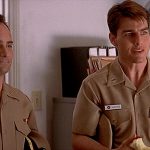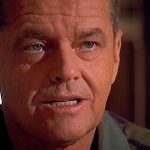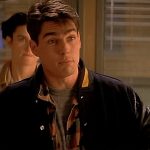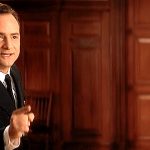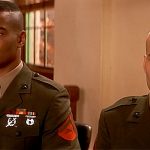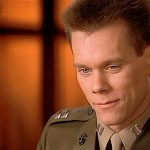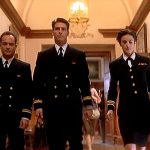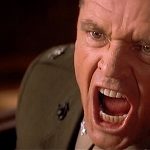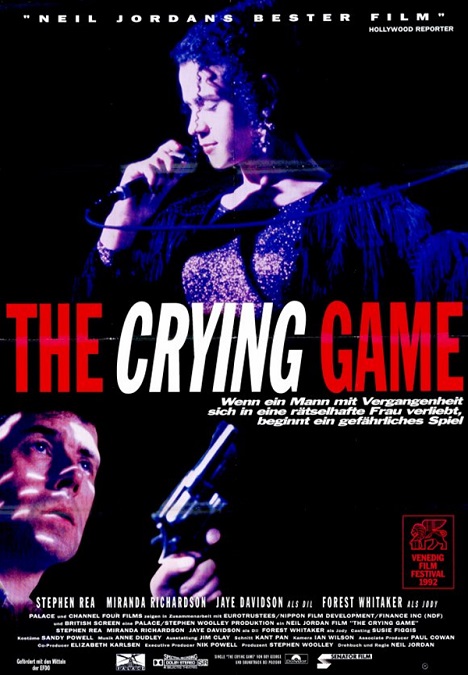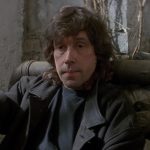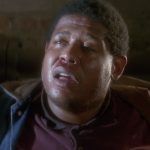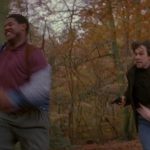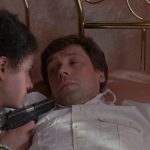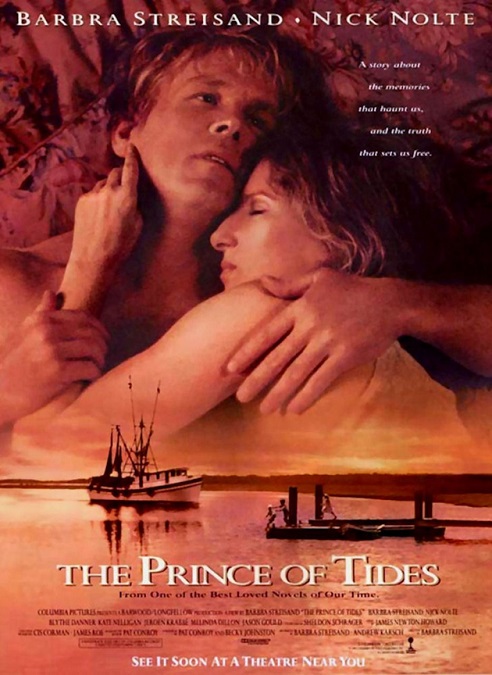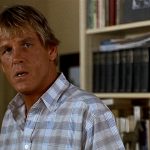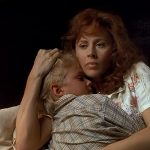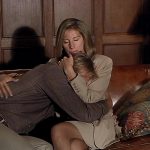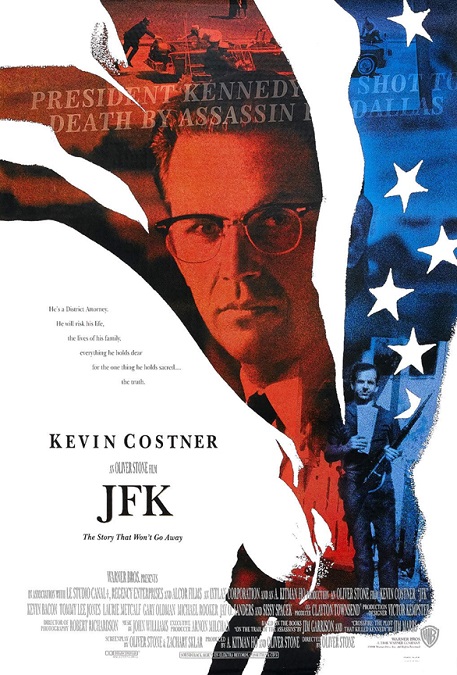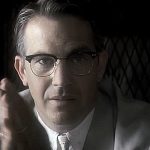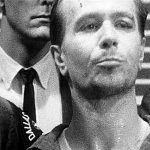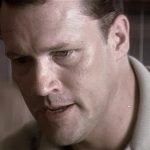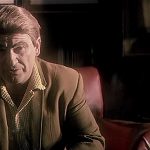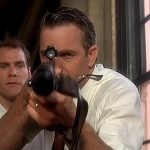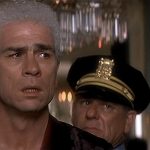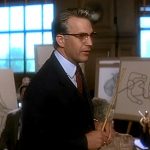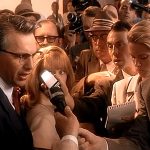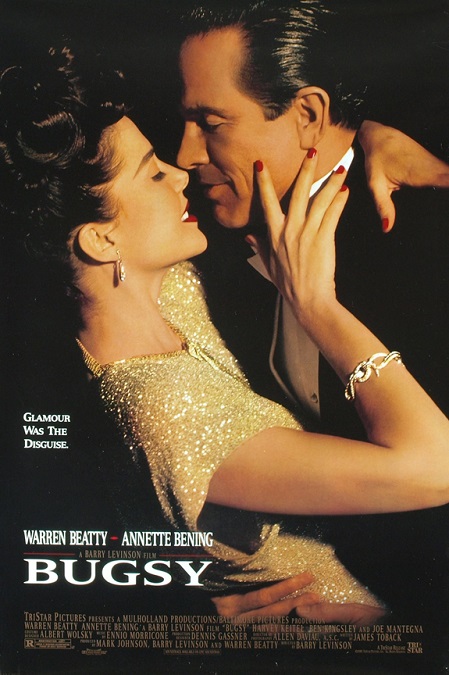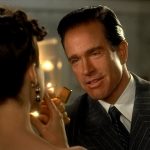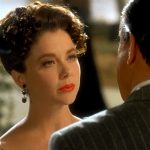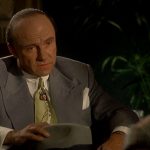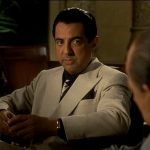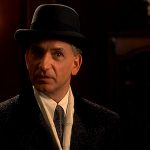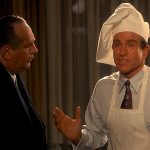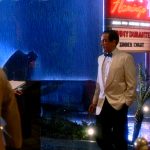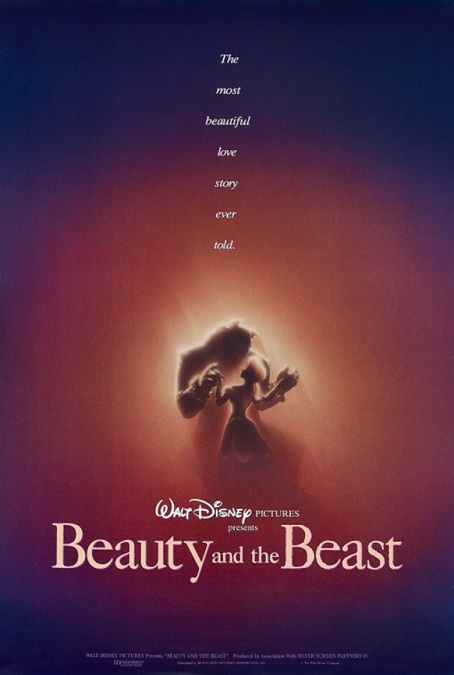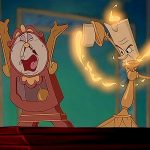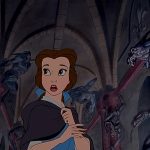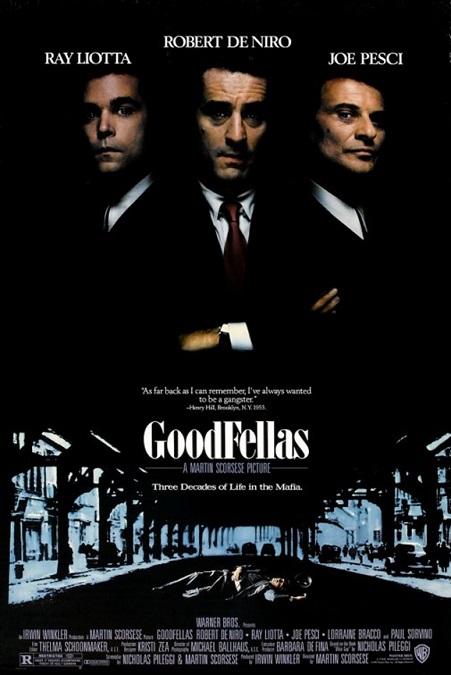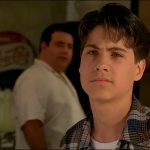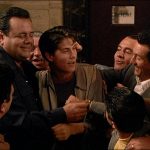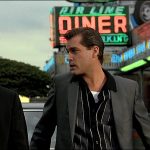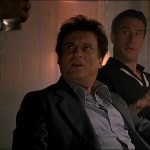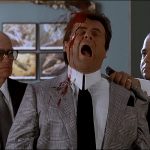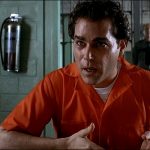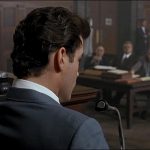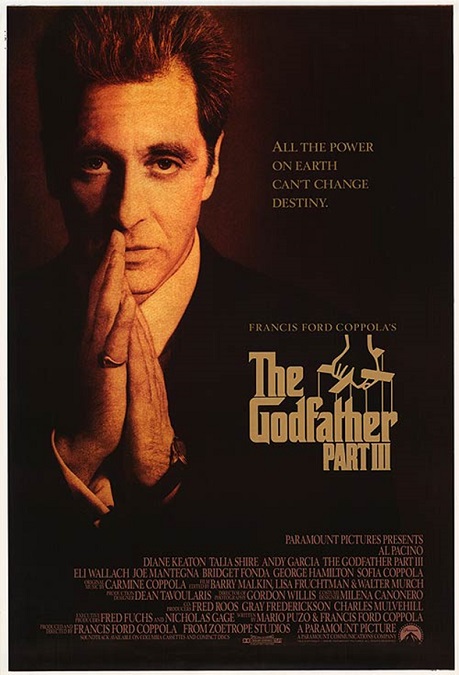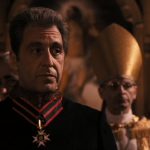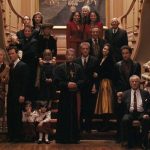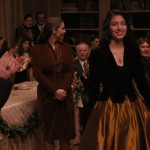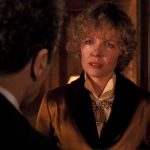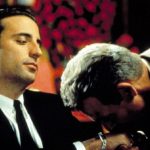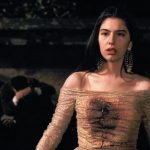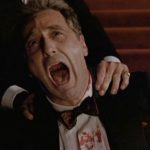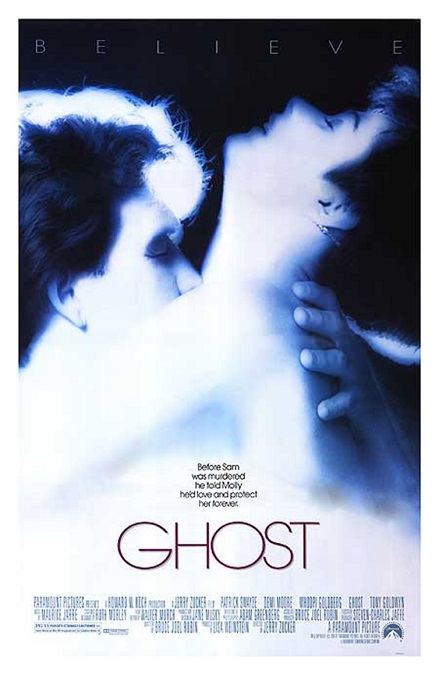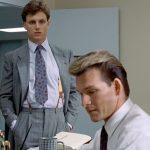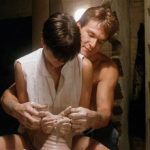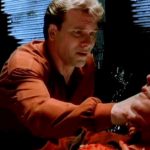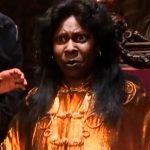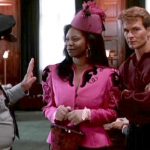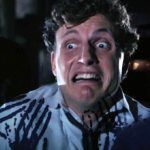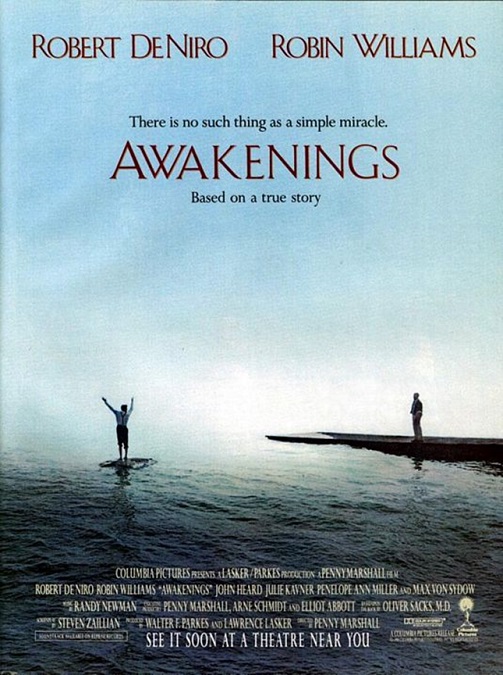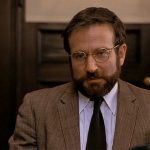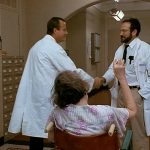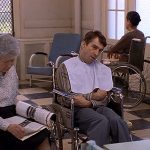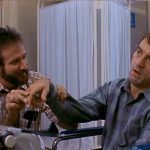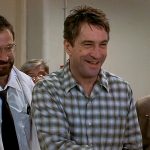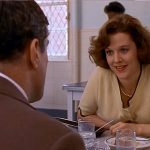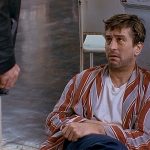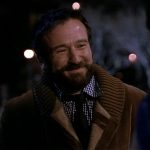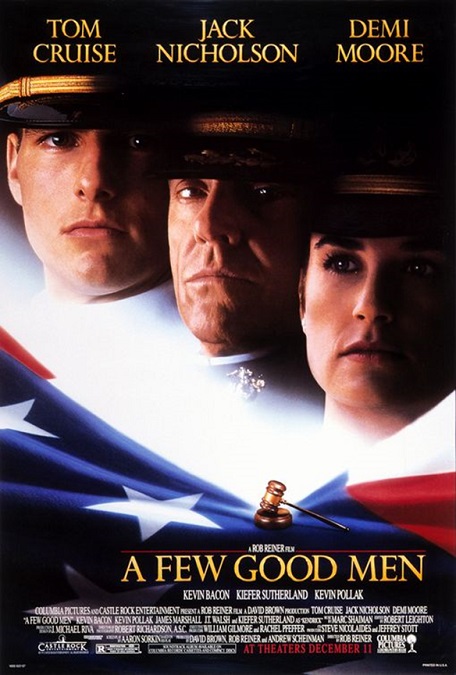
A Few Good Men – 1992
This was a good movie that had the potential to be great, but it lacked something that might have helped bring it to that next level. It lacked mystery, a fact which I’ll cover in greater detail in a bit. The broad strokes of the plot were predictable. But it was the powerful performances of the star-studded cast that saved the film from simple mediocrity. Well-known names like Tom Cruise, Jack Nicholson, Demi Moore, Kevin Bacon, Kevin Pollak, and Keifer Sutherland came together to show off their skills. There were even a few supporting roles by actors who were not famous at the time, but became famous later like Noah Wyle and Cuba Gooding Jr.
This was as courtroom drama, plain and simple. When a U.S. Marine stationed at the Guantanamo Bay Naval Base in Cuba is killed in a routine hazing, Moore, playing Lieutenant Commander JoAnne Galloway, a military lawyer, believes that it was the accidental result of an illegal order called a “code red.” The purpose of the “code red” order was to, by giving an incompetent soldier a beating, force him to become a better soldier. However, the fact that the assault was an order meant that the real culprit was a commanding officer, not Lance Corporal Dawson, played by Wolfgang Bodison, and Private First Class Downey, played by James Marshall, who carried it out together.
Wanting to defend Dawson and Downey, Galloway pursues the case which is assigned to Lieutenant Daniel Kaffee, played by Cruise. He is a smart-mouthed hot shot who also happens to be brilliant. Pollak plays Kaffee’s assistant, Lieutenant Sam Weinberg. The commanding officers of the two soldiers accused of the murder are Lieutenant Kendrick, played by Sutherland, and Colonel Nathan Jessup, played by Nicholson. And finally, the prosecuting attorney, Captain Jack Ross, is played by Bacon.
And there’s the set-up. The details are all revealed at strategic points to foster some tension. But as I mentioned earlier, the plot’s broad strokes, while interesting to watch, were predictable. I knew pretty much how it was going to go, and I was not disappointed. At first, it seems to be an open-and-shut case. But then as a few more details are learned, it becomes more complicated. The defense has a rocky start, but the lawyer becomes passionate about the case. The prosecution seems to have an unbeatable case. The defense becomes discouraged and believes he is going to lose. But then, a surprise witness steps forward, or a crucial piece of evidence is revealed and the defense attorney cannot walk away because he believes he is doing the right thing. In the end, the case gets escalated and more and more people are put on the witness stand until the main bad guy loses control and confesses everything. The defense wins!
It all sounds pretty stereotypical, doesn’t it? And it was. Only the setting and the details were different. We follow the investigative process of Kaffee, Galloway, and Weinberg. We are told everything they are going to do before they do it. We are also clearly shown that the bad guy, Jessup, is guilty, not even allowing us to wonder about his guilt before his breakdown in the courtroom. I think Roger Ebert said it best when he said, “The film doesn’t make us work, doesn’t allow us to figure out things for ourselves, is afraid we’ll miss things if they’re not spelled out.”
But while I’m on the subject, that final reveal which gave the movie its big memorable quote, the one that has made its way into pop culture vernacular, was wonderful to see in its proper context. “You can’t handle the truth!” Nicholson’s performance was fantastic. He played the part of a man who was so passionate about his job as a military officer that he could easily be called a fanatic. He is a megalomaniac who believes that he has the most important job in the world, keeping the citizens of the United States safe from harm. He is therefore completely infallible and undeniably justified in any and every action he takes.
Nicholson had that perfect jar-head attitude. He was so used to being obeyed that he was actually confused when he was not. One scene that stood out to me as awesome was when Jessup arrived in court. He immediately attempted to establish his own dominance over the entire court-marshal trial by belittling Kaffee and demanding that everyone recognize his rank. But then the judge, Colonel Randolph, played by J. A. Preston, put him in his place by letting him know that it was his courtroom and he was in charge, not Jessup. Loved it! I also loved his reaction the result of the trial and Jessup’s arrest. Nicholson’s inspired portrayal was just phenomenal.
But I would be remiss if I didn’t give proper credit to Cruise, Moore, and Bacon. Sure, they were a little cookie-cutter but that was not the fault of the actors. It was the script. The point is, that despite the outrageousness of the actors and their personal personas like Cruise jumping up and down on Oprah’s couch or Moore’s box office bomb, 1996’s Striptease, for which she was paid an unprecedented $12.5 million, they are very good actors. There is a reason why Hollywood keeps putting them on the big screen.

